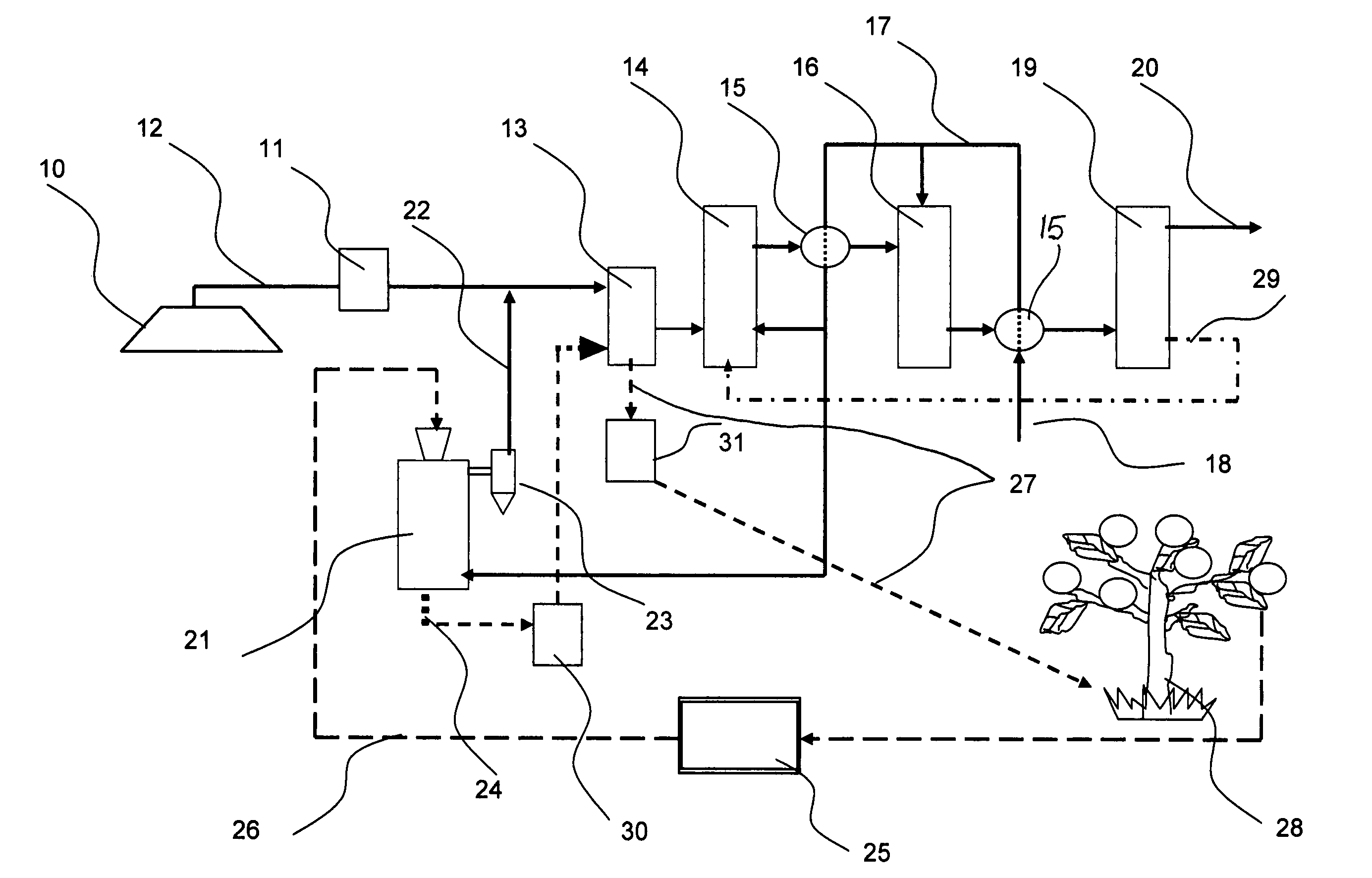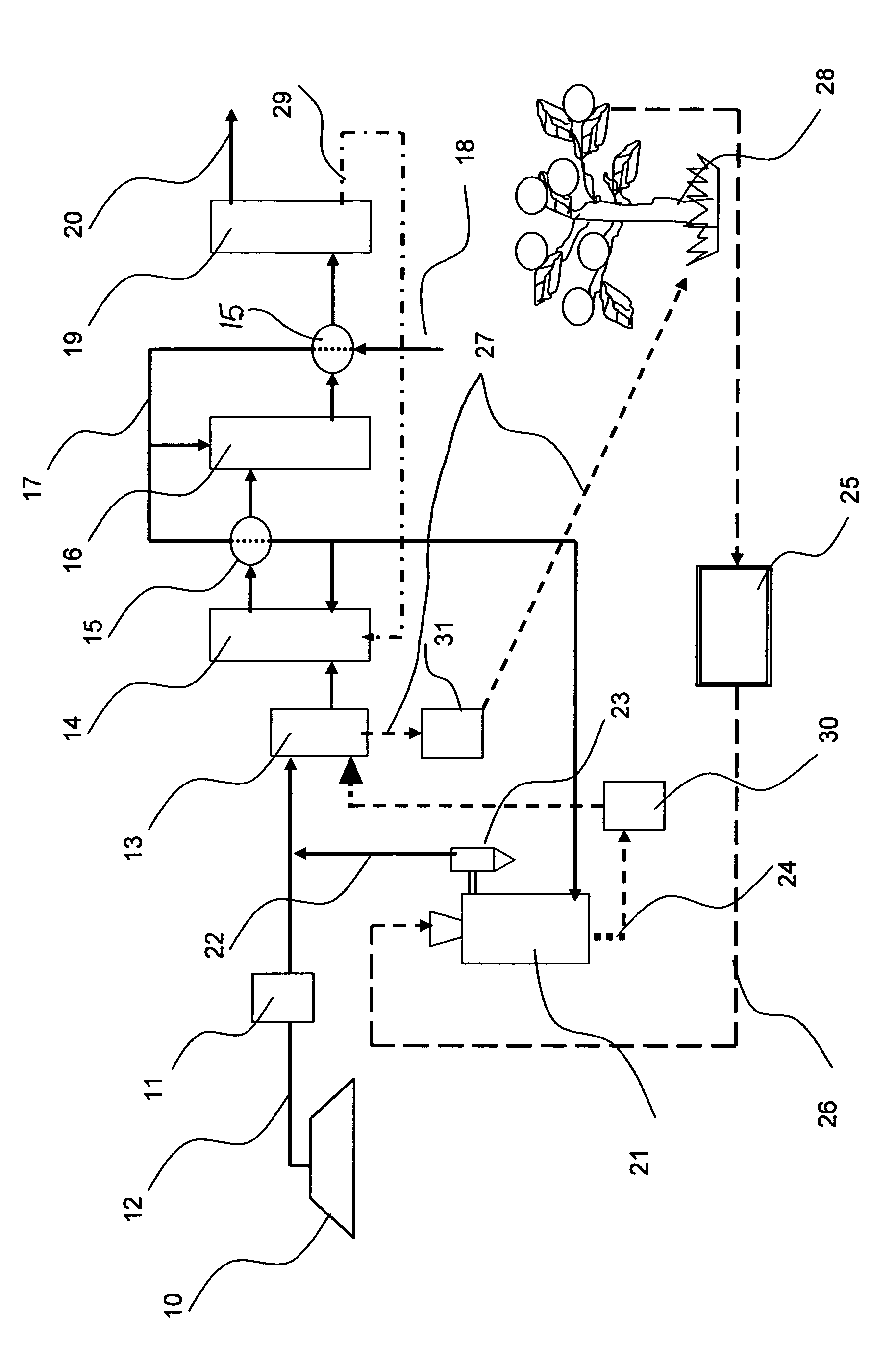Process for hydrogen production via integrated processing of landfill gas and biomass
a technology of landfill gas and biomass, which is applied in the direction of combustible gas production, metal/metal-oxide/metal-hydroxide catalysts, chemical production, etc., can solve the problems of reducing the overall efficiency of converting lfg to hydrogen by this route, reducing the environmental footprint of the technology, and simplifying the technological chain of the process.
- Summary
- Abstract
- Description
- Claims
- Application Information
AI Technical Summary
Benefits of technology
Problems solved by technology
Method used
Image
Examples
example 1
[0070]Catalytic reforming of the gaseous mixture CH4—56.9 vol. % and CO2—43.1 vol. % (molar ratio of CH4 / CO2=1.3) was conducted in this experiment. This gaseous mixture mimics that of LFG from the landfill site in Cocoa, Fla. For the sake of simplicity, N2, O2 and minor ingredients were not included in the tested feedstock. The reforming reaction was conducted in a quartz reactor with OD=12 mm using 0.5 g of Ru (0.5 wt. %) / Al2O3 catalyst at 850° C. and atmospheric pressure. After about one hour from the start of the reaction the steady state process was established with the production of the gaseous product of the following average composition (vol. %): H2—45.4, CO—44.8, CH4—8.9, CO2—0.9. Within the detection limits of an analyzer used, no carbon was detected on the surface of Ru-catalyst during 5 hrs with the average CO2 conversion during the same period measured at 98.9%. Thus, Ru-catalyst demonstrates both high activity and selectivity for CH—CO2 reforming reaction; hence, a very...
example 2
[0071]The experimental conditions were similar to those of the Example 1, except NiO(1-15 wt. %) / Al2O3 was used as a catalyst. Initially, the hydrogen concentration in the effluent gas was in excess of 50 vol. %, but the reaction was not sustainable and hydrogen concentration steadily decreased during the experiment. The amount of carbon accumulated on the catalyst surface after 5 hours corresponded to a methane-to-carbon conversion yield of 15.3 mol. %. After the reaction, the catalyst completely disintegrated from pellets into a fine powder. These experimental observations evidence a major role played by methane decomposition reaction in the overall reforming process. Carbon produced by methane decomposition reaction blocks catalytic active sites causing gradual deactivation of the catalyst. Disintegration of Ni-catalyst can be explained by the growth of carbon particles inside the catalyst pores. This experiments points to high catalytic activity and low selectivity of Ni-catalys...
example 3
[0072]The experimental condition of the reaction and the catalyst used were similar to those of the Example 2, except steam was added to the reagents in order to prevent carbon lay down on the NiO / Al2O3 catalyst surface. Steam was added to methane-CO2 mixture in the amount equimolar to the quantity of methane. Thus the components of the feedstock were as follows: CH4:H2O:CO2: =1.3:1.3:1 (molar). The addition of steam allowed sustainable reaction during 12 hrs of operation. The average concentrations of hydrogen and CO in the effluent gas were 58 and 34.5 vol. %, respectively. The H2 / CO ratio in the presence of steam increased appreciably compared to the experiment of the Example 2, where no steam was added (from H2 / CO=1.2 to 1.7). Carbon dioxide concentration in the product gas was also increased. No carbon deposits were detected on the catalyst surface after the experiment. There were no signs of Ni-catalyst disintegration after the reforming experiments involving steam.
PUM
| Property | Measurement | Unit |
|---|---|---|
| Temperature | aaaaa | aaaaa |
| Temperature | aaaaa | aaaaa |
| Pressure | aaaaa | aaaaa |
Abstract
Description
Claims
Application Information
 Login to View More
Login to View More - R&D
- Intellectual Property
- Life Sciences
- Materials
- Tech Scout
- Unparalleled Data Quality
- Higher Quality Content
- 60% Fewer Hallucinations
Browse by: Latest US Patents, China's latest patents, Technical Efficacy Thesaurus, Application Domain, Technology Topic, Popular Technical Reports.
© 2025 PatSnap. All rights reserved.Legal|Privacy policy|Modern Slavery Act Transparency Statement|Sitemap|About US| Contact US: help@patsnap.com


